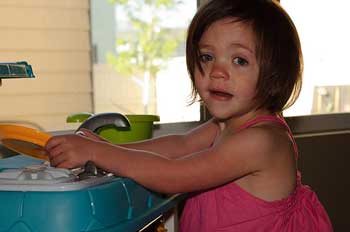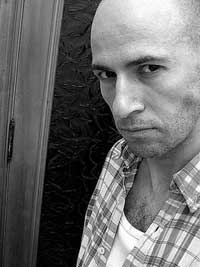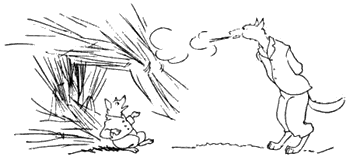
Source: Bakin’ Brownies, brettneilson, Flickr
Direct characterization means that the author tells the reader exactly who the character is through narration. Let’s look at an example of direct characterization from “The Piano Player” by Donald Barthelme.
Outside his window five-year-old Priscilla Hess, square and squat as a mailbox (red sweater, blue lumpy corduroy pants), looked around poignantly for someone to wipe her overflowing nose.
Barthelme creates a picture of Priscilla and tells us exactly what she looks like in the scene.

Source: Joanjo. Expressio (11.B) Dur. BiN. C.Magraners.Sueca. 31-3-2010, Joanjo Anguar Matoses, Flickr
Authors also use direct characterization to tell us about a character’s personality. In the opening paragraph of “A Cap for Steve,” Morley Callaghan describes Dave Diamond as follows:
Dave Diamond, a poor man, a carpenter’s assistant, was a small, wiry, quick-tempered individual who had learned to make every dollar count in his home.
In this description, we learn what Dave looks like and also the fundamental traits of his character: he is quick-tempered and frugal. Dave’s character plays an important role in the story. His son Steve is a huge fan of the Philadelphia Phillies, a baseball team. Steve manages to do enough chores to earn enough money to go see the Phillies play.
While he is at the game, one of the players gives him a baseball cap. This cap becomes Steve’s prized possession until he loses it. Later, Dave and Steve see another boy wearing the cap. The boy bought it from the person who took it from Steve. Of course they want the ball cap returned. The boy’s father is rich and offers to pay Steve many times what the cap is worth so that his son can keep it. Dave convinces Steve to take the money. The excerpt above, which is direct characterization from the first paragraph of the story, helps the reader to understand why Dave encourages Steve to give up his cap at the end of the story.

Source: English Fairy Tales, illustrated by Arthur Rackham, Project Gutenberg
 Using your notes, write a direct characterization of the Big Bad Wolf from the story “The Three Little Pigs.” When you are finished, check your understanding to see a possible response.
Using your notes, write a direct characterization of the Big Bad Wolf from the story “The Three Little Pigs.” When you are finished, check your understanding to see a possible response. Sample Response:
The wolf was towering and hairy with razor-sharp teeth. He was extremely persistent in his quest to find little pigs and eat them up.